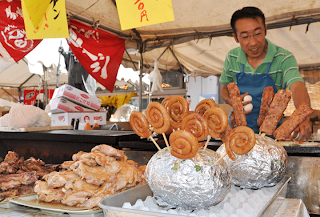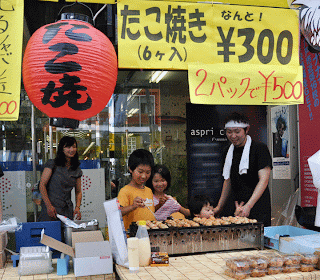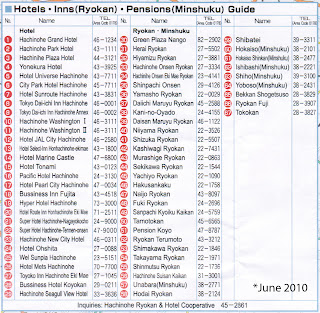Monday, July 5: Asamushi and Aomori Cities
Today we decided to take a road trip to the prefecture’s capital city. Instead of taking the quicker toll road, we opted for the scenic route along National Road 4. Returning home, we paid about 900 yen and took the toll road. This was a huge mistake because unlike USA highways, there are no shoulders and rest stops are infrequent. In retrospect, the scenic road was a much better route for driving with a toddler and infant because it provided places take a break.
Asamushi Aquarium

In comparison to aquariums in San Diego, Asamush is small and unimpressive. Still, it is considered a top Aomori tourist attraction and a nice outlet for young children. This two story aquarium houses an assortment of fish, turtles, small sharks, sting rays, sea otters, penguins, seals, and bottlenose dolphins. I thought the most intriguing aspect of the building was its 10m x 15m x 4m acrylic seawater tank/tunnel walkway.
While strolling along its corridors and viewing historic photos, I discovered that Asamushi Aquarium was founded in 1922 as a marine biology research facility by the biology department of Tohoku Imperial University. It was later opened to the public in 1924. Although the facilities were rebuilt in 1983, many areas of the building still lack modern air conditioning.
Entrance Lockers
Many lockers in train stations and tourist sites are decorated

Seawater Tunnel Walkway
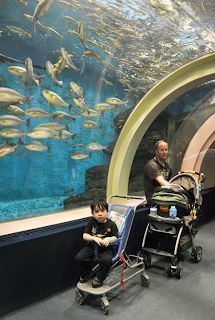
Creatures in tunnel

Asamushi Mascot

Dolphin that rests on the ledge
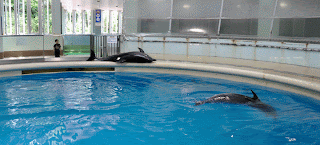
Eels

Cuttlefish

Asamushi Aquarium Brochure


ASPM or ASPAM
Aomori Sightseeing Products Mansion, a 15-floor triangular prism facing Aomori Bay, contains a tourist information center, stores selling common Aomori prefectural goods, local artist exhibit, a panorama theater (¥600 adults, ¥450 students, ¥300 children), and observation lounge on the 13th floor (¥400 adults, ¥300 students, ¥200 children). I have yet to discover why floor 12 is omitted from the building. Anyway, the edifice itself did not have a lot going for it unless one enjoys views of the ocean.
I would recommend visiting ASPM during a summer months preceding Aomori’s famed Nebuta Matsuri because 22 large canvas buildings surrounding ASPM temporarily house the construction of these parade floats. If lucky, one can get a glimpse of artisans assembling the wooden frames, fastening lights, affixing paper, and painting historic Japanese figures on these ornate structures. Held annually from Aug 2-7, Aomori’s Nebuta Masturi is considered one of Japan’s largest festivals.
Aomori City Tony Roma http://www.tonyromas.jp/en/locations.html
I’ve never really been a fan of Tony Roma in the USA, but since I was having a craving for American food, we decided to have lunch here. We ordered the Crispy Chicken Tenderloin appetizer (¥780), Crispy Onion Burger (¥1380), Ribs and BBQ Chicken (¥1980), and soda (¥380 no free refills provided). This Tony Roma’s is rather small in size and located on the second floor of the Richmond Hotel. Adjacent building parking is provided at ¥300 per hour. At the exchange rate of US $1 = Japanese ¥85, our meal was over $50 and not really worth it in terms of portion size, quality, or price.
Monchichi ... Oh they're red and cuddly

Tsugaru Shamisen Live Performance

Traveling Art Exhibit

More Local Art

Large Wall Quilt of Aomori Prefecture

Captain Geo Exhibit / Play Area

Slide Structure

Nebuta Float on display

ASPM Brochure

















